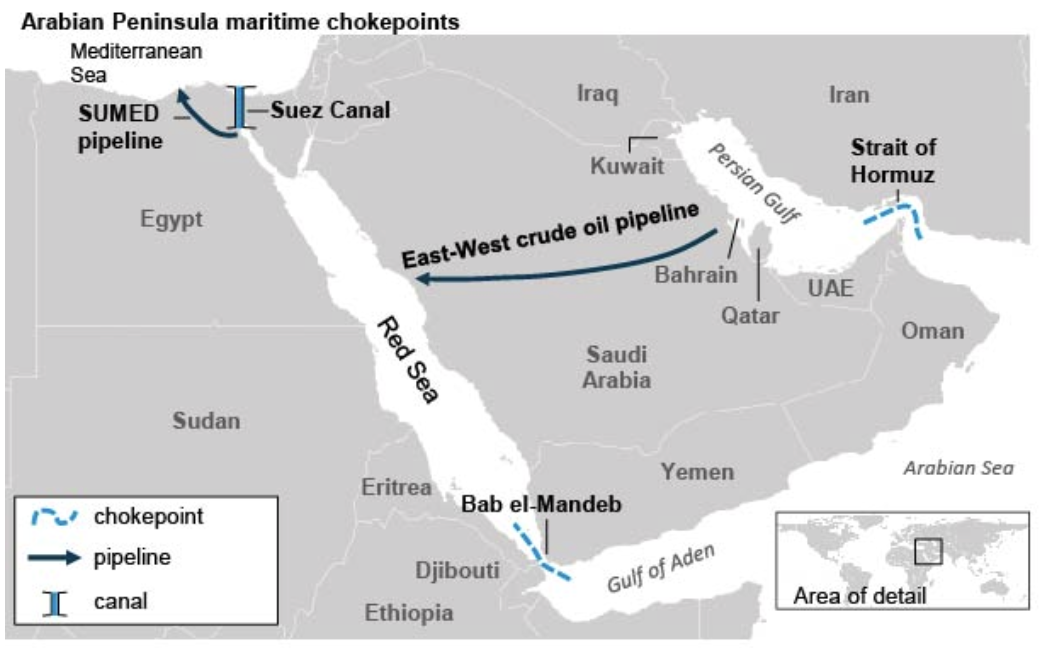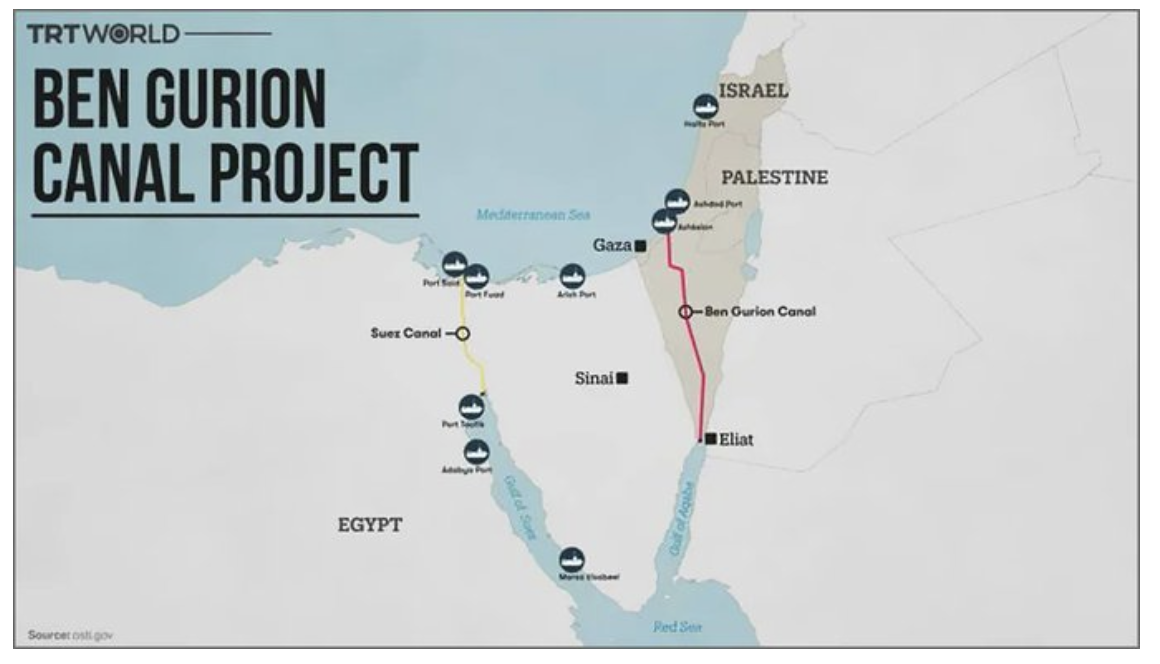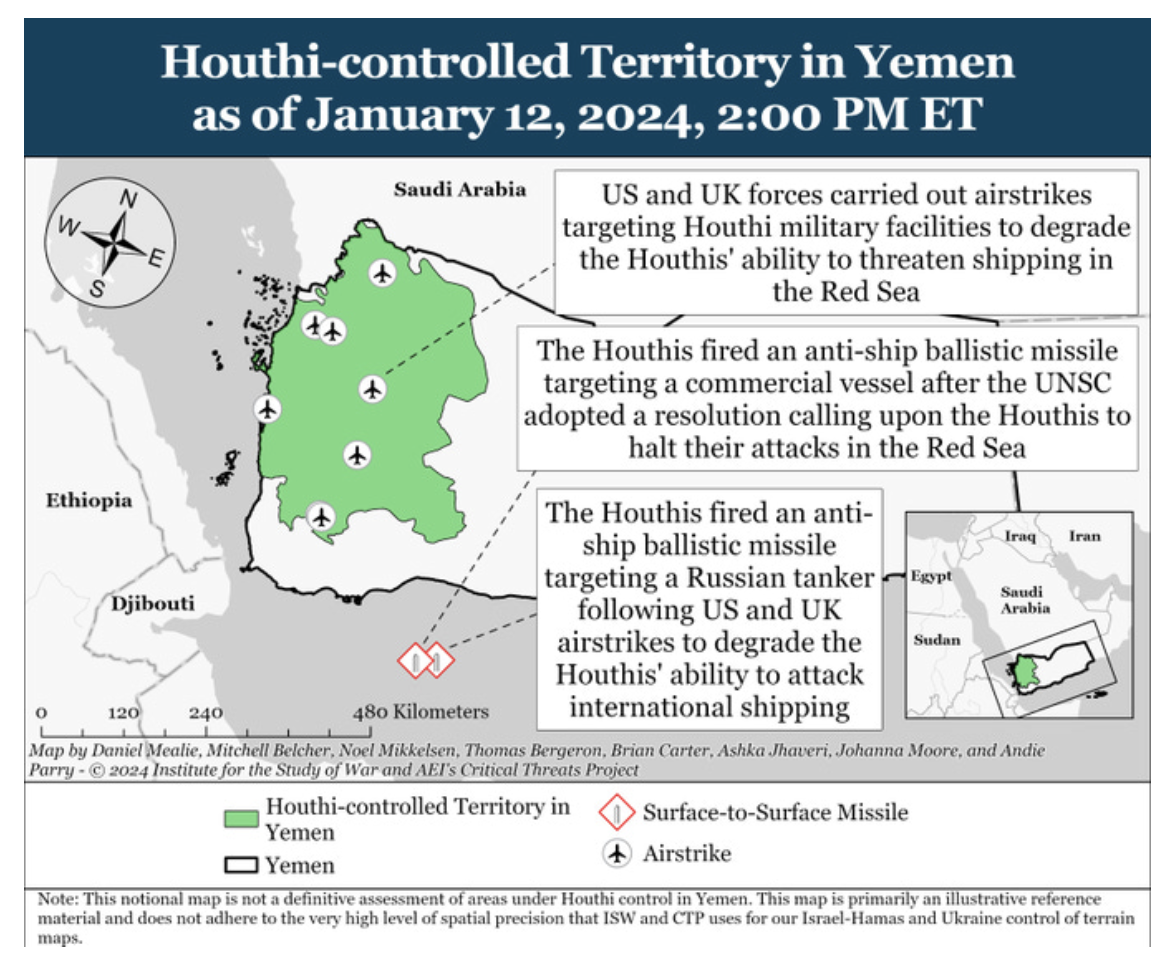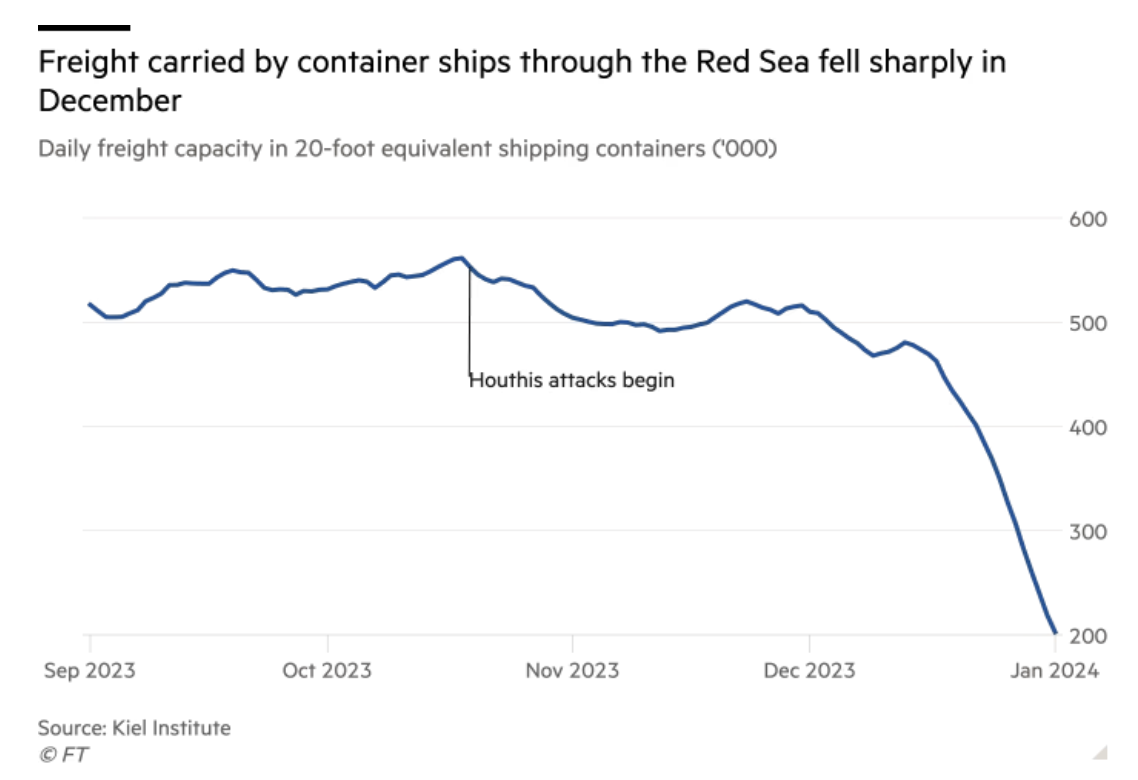The Fate of Global Maritime Trade Does Not Hinge upon the Narrow Red Sea Strait
Too many punditries have portrayed the Israel-Hamas war and Houthi attacks along the Red Sea as the next Black Swan events. Are these fears credible?
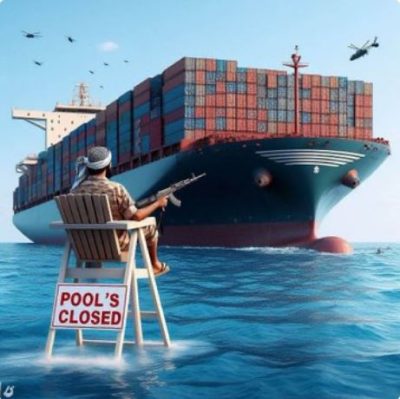
All Global Research articles can be read in 51 languages by activating the Translate Website button below the author’s name (only available in desktop version).
To receive Global Research’s Daily Newsletter (selected articles), click here.
Click the share button above to email/forward this article to your friends and colleagues. Follow us on Instagram and Twitter and subscribe to our Telegram Channel. Feel free to repost and share widely Global Research articles.
New Year Donation Drive: Global Research Is Committed to the “Unspoken Truth”
***
As soon as the Israel-Hamas war broke out on Oct 7, the mediascape was rife with speculations regarding the future of the Gaza Strip and the Red Sea maritime trade.
Source: ajot.com
With big question marks still lingering over the genesis of this conflict, assorted pundits have regurgitated and permuted various scenarios over the fate of Gaza and the wider region.
Will Israel finally annex the Gaza Strip and, in cahoots with Egypt, expel its residents to the Sinai Peninsula?
If this happens, Israel will have unimpeded access to trillions of dollars worth of hydrocarbon deposits off the Levantine coastline. A portion of that revenue may be shared with Egypt for the “welfare” of relocated Gazans.
An alternate speculation centred on the construction of a new sealane to bypass the problematic Suez Canal once and for all. The Ben Gurion Canal, as it is called, is a decades-old plan.
A 1963 memorandum from the Lawrence Livermore National Laboratory went as far as proposing the use of 520 two-megaton nuclear bombs to burrow the Negev Desert at an estimated cost of $575 million ($5 billion in 2021). It was a part of a larger scheme called Operation Plowshare. While the original plan sidestepped Gaza for obvious reasons, a new post-annexation canal would be straighter, cheaper, bigger and more expeditious for Israel and the global shipping industry.
While these speculations are not without merit, they are also riddled with flaws. It would take years, possibly more than a decade, to build a canal through the Negev Desert. The project will attract all kinds of international sanctions and regional terror attacks. The success of the Israeli canal would also be contingent on a peaceful Bab el Mandeb, the other maritime bottleneck in the Red Sea.
In the meantime, China may recover from its current economic slump to complete its Belt and Road Initiative (BRI), thereby diminishing the centricity of a new Red Sea canal. With Eastern Ukraine and the Sea of Azov likely to be incorporated into Russia in the near-future, new kingmakers will appear on the geopolitical chessboard.
Red Sea Stakes
At the time of writing, Tel Aviv’s military campaign in Gaza has caused between 24,000 and 30,000 Palestinian deaths while the Israeli army death toll number in the hundreds. In a region brimming with ethnoreligious faultlines, new flashpoints were bound to emerge, ostensibly in support of the beleaguered Gazans.
Houthi rebels from eastern Yemen, which faces the Red Sea, were the first to create a new frontline by launching missiles, drones and fast attack boats against cargo vessels linked to the West and its allies.
Russian and Chinese vessels were eventually assured of safe passage. Some ships have resorted to broadcasting their neutrality via the Automatic Identification System (AIS) used in the maritime industry.
Houthi attacks are particularly focused on the Bab el Mandeb strait which is only 29 kms wide, presenting an ideal killzone for shipping vessels. To counter this threat, a number US-allied nations have dispatched naval vessels off the coast of Yemen.
The combined forces of the United States and United Kingdom went a step further by launching decapitation airstrikes against Houthi-controlled hotspots from Jan 11 onwards. It was pointless. The Houthis do not have a centralised political and military hierarchy. These airstrikes may also embolden them to justify further attacks against ships from the Western orbit. Despatching US marines to rugged Houthi-controlled terrains would likely be as futile as the two decades-long military intervention in Afghanistan.
The maritime stakes are undeniably high in the Red Sea, with 50-odd ships ferrying cargo worth $3-9 billion each day ($1 trillion each year). According to FT.com, up to “15% of global sea trade, including 8% of grain, 12% of seaborne oil and 8% of seaborne liquid natural gas” transit the narrow seaway each year.
Disruption along the waterway, including accidental ones, can be costly. When a large container ship ran aground in 2021, the combined cost to global trade was $9.6 billion per day for nearly a week. Just imagine what would happen if a large US or UK destroyer was sunk in the Red Sea? Various types of unexploded munitions on the seabed may render the entire passage off limits for a considerable period of time.
With the Houthi menace slashing Red Sea traffic by 44%, the economies of Ethiopia, Eritrea and Sudan, which straddle the Western side of sealane, will be hit particularly hard. Egypt will lose a chunk of the $9 billion in annual transit fees through the Suez Canal. If the current crisis persist, desperate elements from these nations may either emulate or join forces with Somali pirates to extract whatever they can from ships plying the Red Sea.
The regional bête noire, Israel, has not escaped unscathed from this imbroglio. Its Red Sea port of Eilat is reeling from a steep 85% drop in activity. This may dent Israel’s long-term ambitions of becoming a global LNG hub.
Bypass Solution
The Cape of Good Hope offers an excellent bypass solution for global shipping. In fact, many recent commentaries seemed ignorant of the eighth-year closure of the Suez Canal from 1967–1975 due to protracted Arab-Israeli conflicts. Ironically, the closure had halted shipments of oil from Iran to Israel. They were allies back then!
While the stakes are high, the fate of global trade does not hinge on the Red Sea. Not at the moment anyway. The southern African route nonetheless involves longer transits costing billions in extra dollars. Predicaments like these may eventually normalise buffer inventorying in place of the precarious Just-in-Time (JIT) system. Shipping insurance may go up, albeit without premiums associated with geopolitical and terror risks in the Red Sea. Smaller shipping companies, with smaller profit margins and cash reserves, may fold up. This is in sync with a familiar trend which accelerated after the defining event of Sept 11, 2001. Every manufactured global crisis, including the ongoing coronapsychosis and climate change mania, has served to funnel wealth into the hands of the transnational capitalist class (TCC).
The detour around Africa will add seven to 20 days in transit, involving an additional 3,000-3,500 nautical miles (6,000km). Freight rates for a standard container transported from China to Northern Europe has consequently risen from $1,500 in November to more than $4,000 at the time of writing. Freight rates from India stands at a median $3,000. The cumulative costs for national trade may be much higher as merchant vessels are now accompanied by an array of naval escorts. Severe drought in the Panama Canal has also reduced transit slots for vessels. These developments will collectively aggravate inflationary trends worldwide.
The ultimate winner in this quagmire would be Russia. Its Northern Sea Route will shorten Asia-Europe maritime transit by as much as 40%. However, relentless Western sanctions may prompt Moscow to restrict passage to ships from “friendly nations”. The primary beneficiaries will be China and India.
Crystalline Sea, Murky Waters
The Red Sea was named after a red algae that is endemic to its waters. With no rivers disgorging freshwater into the passageway, the Red Sea is salty, pristine and rich in marine life — making it a prized destination for scuba divers worldwide. The Israelis once took advantage of this tourist appeal by executing Operation Moses and Operation Joshua in 1984-1985. An abandoned Red Sea resort was transformed into a scuba diving hive by day and a Trojan Horse for the expatriation of Ethiopian Jewish refugees from Sudan by night.
While the Red Sea waters are crystalline, the wider geopolitical undercurrents are outright murky. This brings us back to Hamas, the main protagonist in the current drama. Just who does Hamas serve?
It is an open secret that Hamas was created in 1987 by Israeli secret services in an attempt to deter the establishment of a future Palestinian state. This long-term strategy was reiterated by various Israeli officials over the years. “Anyone who wants to thwart the establishment of a Palestinian state has to support bolstering Hamas and transferring money to Hamas,” Israeli Prime Minister Benjamin Netanyahu informed his Likud party’s Knesset members in March 2019.
Netanyahu’s admission was made in 2019, after Hamas had launched tens of thousands of missiles towards Israel over two decades. Yet, we are repeatedly told that Hamas is a proxy of Iran. The lamestream media has failed to reconcile this apparent contradiction.
As far as Israel is concerned, regular Hamas attacks provide a “moral justification” for the usurpation of Palestinian lands. Iran portrays these appropriations as yet another symptom of the Sunni Islamic world’s collective impotence. Maybe, a day will come when the Middle East is carved up between Tel Aviv and Tehran?
For the time being, maritime disruptions in the Red Sea should pose no long-term threats to global trade. Yet, there remains one particular geographic anomaly that has the potential to rattle global trade and finance overnight. There is hardly any mention of it in the open source realm. It is a complete black hole. My upcoming Substack analysis will unpack this hidden conundrum. Stay tuned.
*
Note to readers: Please click the share button above. Follow us on Instagram and Twitter and subscribe to our Telegram Channel. Feel free to repost and share widely Global Research articles.
Dr. Mathew Maavak, who researches systems science, global risks, geopolitics, strategic foresight, governance and Artificial Intelligence. He is a frequent contributor to Global Research.
Featured image source


